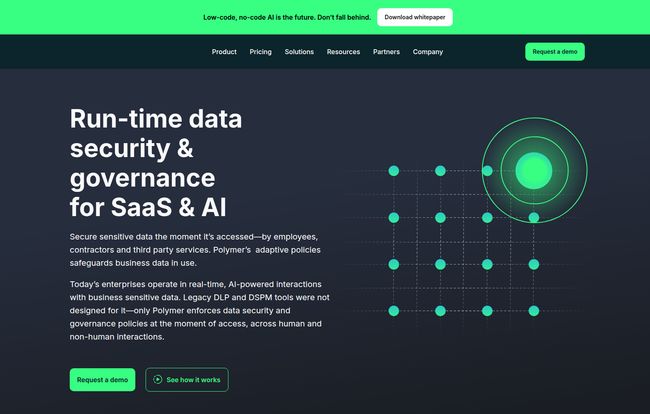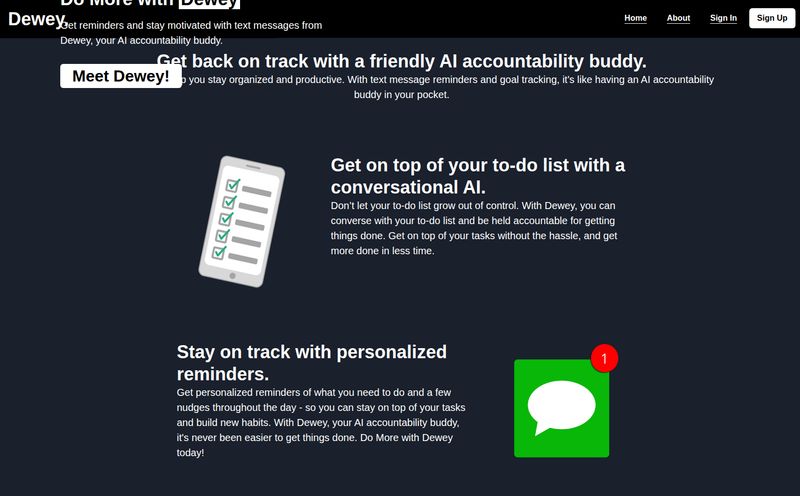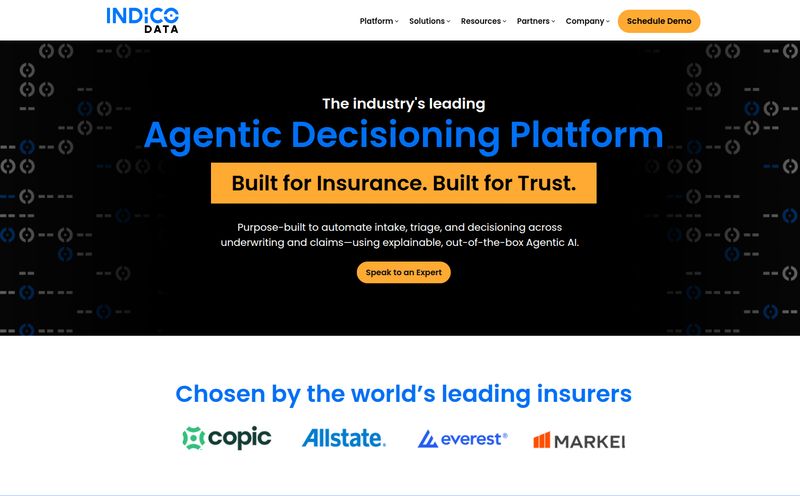The way we work has completely changed. Every team, from marketing to HR, is now armed with a dizzying array of SaaS apps, cloud storage, and yes, the big one: Generative AI tools like ChatGPT, Claude, and Gemini. It’s fantastic for productivity. It’s a waking nightmare for anyone in charge of keeping company data safe.
I’ve been in the SEO and digital strategy game for years, and I’ve watched this slow-motion explosion of data firsthand. We’re all putting sensitive information into third-party apps with a level of trust that, frankly, is a bit terrifying. We copy-paste customer data into a prompt, share strategy docs in a Slack channel, and save everything to a cloud drive without a second thought. What could possibly go wrong?
Well, a lot. And that’s where the conversation about tools like Polymer DSPM starts. I’ve been hearing the buzz about it, so I decided to do a proper deep dive—or as deep as I can get without being an enterprise CISO. This isn’t just another tool review. It's a look at whether this new breed of data security is actually the answer we need.
First Off, What is DSPM and Why Isn't My Old DLP Enough?
If you've been around IT security, you've heard of DLP, or Data Loss Prevention. For a long time, it was the standard. Think of it like a security guard standing at the main exit of your office building, checking everyone's bags on the way out. It’s a bit blunt, often rule-based, and can create a lot of annoying false positives. It was built for a world where your data lived inside your own building.
But our data doesn’t live there anymore. It’s scattered across dozens of cloud services. That's where DSPM, or Data Security Posture Management, comes in. It's a fundamentally different approach. It's less about building a single big wall and more about having intelligent security everywhere your data is.
I saw a quote from Lorenzo Pedrocelli on Polymer's site that really nailed it: "I like to think of traditional DLP as the past and present, and what Polymer product protects the data of tomorrow in a contextual risk model."
That hits the nail on the head. DSPM is about context. It’s about understanding not just what the data is, but who is using it, where it’s going, and whether that specific action is risky right now. It's security for the messy, interconnected, AI-driven way we work today.
How Polymer Actually Works (The Non-Technical Version)
So, how does Polymer pull this off? From what I can gather, their whole system is built on a four-step loop that runs continuously. It’s not a one-and-done scan; it’s a constant, vigilant process.
First, it searches, labels, and classifies your data. It connects to your apps—think Google Drive, Slack, Microsoft Teams, GitHub, even ChatGPT—and figures out what’s what. This isn’t just looking for credit card numbers; it’s identifying PII, health information, confidential project details, and all that good stuff, whether it’s in a structured database or just a random message.
Next, it detects and scores risk. This is the machine learning part. It looks at who is accessing the data and what they're doing with it. Is it an engineer accessing code? Probably fine. Is it someone from marketing suddenly trying to download the entire customer database? Red flag. It builds a risk score based on context, not just a simple “yes/no” rule.
Then, the magic happens: it automates the response. Based on the risk, it can do things automatically. Maybe it just sends an alert. Or maybe it actively redacts the sensitive data from a Slack message in real time. Someone accidentally pastes a customer's personal details into a public channel? Polymer can turn it into `[REDACTED]` before it becomes a real problem. This is the proactive part that most older systems miss.

Visit Polymer DSPM
Finally, it helps you demonstrate compliance. With all this logging and monitoring, you have a clear audit trail to show that you're meeting standards like GDPR, HIPAA, and SOC 2. It’s not just about stopping breaches but proving you're doing your due diligence.
It's an ongoing cycle of watch, learn, and act. Much smarter than a simple gatekeeper.
The Standout Features That Caught My Eye
Listing features can be dry, so let’s talk about what these things actually mean for a business.
Real-Time Visibility and Automated Redaction
This is the big one for me. The ability to see what’s happening as it happens and automatically fix it is a game changer. We’ve all seen the cringe-worthy message in a company-wide chat where someone shares something they shouldn't have. The automated redaction feature is like having an instant 'undo' button for data leaks. It's especially powerful for GenAI tools, preventing employees from accidentally training public AI models on your private company data.
It’s Agentless and Low-Code
Anyone who has had to roll out software across an entire company knows the pain of installing agents on every single machine. It’s a nightmare. Polymer is agentless, meaning it connects to your SaaS apps via APIs. This makes setup monumentaly easier and less intrusive. The "low-code" part means you're setting up rules and policies through a user interface, not by writing complex scripts. Huge plus.
A Focus on Human Behavior
Here’s something I found genuinely interesting. Polymer includes what it calls “Active Learning.” It doesn't just block a risky action; it can pop up a notification to the employee explaining why it was risky. This is brilliant. It turns a potential security incident into a teachable moment, helping to build a better security culture over time. It’s treating the cause, not just the symptom. Most data breaches, after all, aren’t malicious hackers in hoodies; they're well-intentioned employees making mistakes.
The Good, The Bad, and The Complicated
Alright, no tool is perfect. In my experience, you always have to weigh the shiny promises against the practical realities.
On the plus side, the focus on real-time, proactive security for modern tools is exactly what the market needs. The agentless setup is a massive win for any overworked IT department. And the integrations with platforms like Slack, Teams, and GenAI services show they understand where the real risks are today. It feels incredibly timely.
However, there are a couple of things that give me pause. The first and most obvious one is the pricing. It’s not transparently listed on their website. You have to “Contact Us,” which is a classic enterprise sales move. I get it, they want to tailor the package, but it's always a bit of a frustration for someone trying to do initial research. More on that in a sec.
Second, a system like this is only as good as its configuration. This is not a magic box you just turn on. You have to invest time in setting up the policies and workflows that make sense for your business. And its effectiveness hinges on the accuracy of its AI risk assessment. While machine learning is powerful, it's not infallible. It's a calculated bet on the algorithm being smarter than your average human error.
Decoding the Polymer Pricing Plan
So, about that pricing. While you won't find a dollar amount on their page, Polymer does outline its tiers: Standard, Business, and Enterprise. They also use a credit-based system, which is... interesting. Think of credits as tokens you spend on specific actions like running a big historical scan of all your files or generating an insider threat model.
Here’s a quick breakdown of the tiers:
| Plan | Best For | Key Features |
|---|---|---|
| Standard | Introductory offer with core functionality. Good for getting started. | Unlimited SaaS Connections, Securing for GenAI. |
| Business | Mid-sized companies launching a data governance program. | Everything in Standard, plus Anomaly Detection, Custom Reporting, Analytics. |
| Enterprise | Large companies with complex, large-scale security needs. | Everything in Business, plus more granular controls and higher credit limits. |
The credit system adds a layer of complexity. For example, a full historic scan might cost 100 credits, while generating a document label might cost 50. The number of credits you get increases with each plan. It's a model that allows for flexibility, but you'll need to talk to their sales team to figure out what it would actually cost your organization. You can see the tiers for yourself on their pricing page.
So, Who Is Polymer Really For?
After digging in, it's clear Polymer isn't for the solo entrepreneur or the small team that's just using a handful of apps. The real value kicks in when data security starts to feel like a game of whack-a-mole.
I see this being a strong fit for mid-sized to large companies that have fully embraced cloud and SaaS workflows. If your teams live in Slack, share constantly on Google Drive, and are starting to experiment heavily with GenAI, then you are squarely in Polymer's target audience. Companies in regulated industries like finance or healthcare, who have serious compliance needs, would also find the automated governance and audit trails incredibly valuable.
It's for the organization that has graduated from basic security and needs a dynamic, intelligent system that can keep up with the speed of modern work.
FAQs about Polymer DSPM
- What is Polymer DSPM in simple terms?
- Think of it as an intelligent security guard for your company's data in the cloud. It watches how data is used in apps like Slack, Google Drive, and ChatGPT, and automatically stops or fixes risky actions in real time, like redacting sensitive info from a message.
- Is Polymer just another DLP tool?
- Not really. Traditional DLP is like a security checkpoint at the main door. Polymer's DSPM is more like having smart, context-aware security in every single app you use. It's proactive and designed for the cloud and AI, whereas many DLP tools are reactive and built for older, on-premise systems.
- Is Polymer difficult to set up?
- One of its biggest advantages is that it's "agentless." You don't have to install software on every employee's computer. It connects to your cloud apps through APIs, which is much simpler. However, you will need to invest time in configuring the security policies and rules to match your company's needs.
- What kind of tools does Polymer integrate with?
- It integrates with a wide range of popular SaaS tools, cloud storage, and GenAI platforms. The list includes Slack, Microsoft Teams, Google Drive, Jira, Zendesk, GitHub, and AI tools like ChatGPT and Gemini.
- How does Polymer's pricing work? Do I pay per user?
- Polymer doesn't seem to use a per-user model. It has three tiers (Standard, Business, Enterprise) and uses a credit system. You spend credits on specific actions, like running large data scans. The actual cost isn't public; you need to contact their sales team for a quote.
Final Thoughts
So, is Polymer the future of data security? It’s certainly a glimpse of it. The shift from reactive blocking to proactive, context-aware management is the right move. The world is only going to get more interconnected, and our data will only get more spread out. A tool that understands this new reality isn't just nice to have; its becoming a necessity. It’s not a simple, fire-and-forget solution, and the lack of public pricing is a hurdle. But for the right company, the power and peace of mind it offers could be well worth the investment. It’s a serious tool for a serious, and growing, problem.
Reference and Sources
- Polymer Official Website: https://www.polymerhq.io/
- Polymer Pricing Page: https://www.polymerhq.io/pricing/



